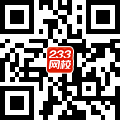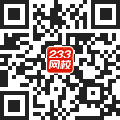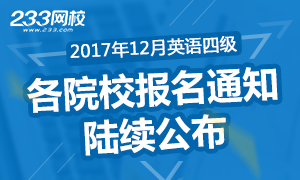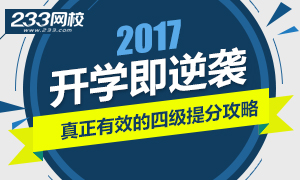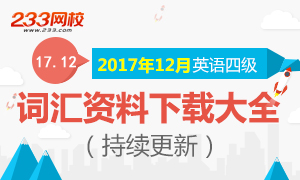歷年英語四級閱讀真題全解析(2004-2006)
- 第1頁:2004.6-Passage Two
- 第2頁:2004.6-Passage Three
- 第3頁:2004.6-PassageFour
- 第4頁:2005.1-Passage One
- 第5頁:2005.1-Passage Two
- 第6頁:2005.1-Passage Three
- 第7頁:2005.1-Passage Four
- 第8頁:2005.6-Passage 1
Passage 3
Consumers are being confused and misled by the hodge-podge (大雜燴) of environmental claims made by household products, according to a “green labeling” study published by Consumers International Friday.
Among the report’s more outrageous (令人無法容忍的) findings-a German fertilizer described itself as “earthworm friendly” a brand of flour said it was “non-polluting” and a British toilet paper claimed to be “environmentally friendlier”
The study was written and researched by Britain’s National Consumer Council (NCC) for lobby group Consumer International. It was funded by the German and Dutch governments and the European Commission.
“ While many good and useful claims are being made, it is clear there is a long way to go in ensuring shoppers are adequately informed about the environmental impact of products they buy,” said Consumers International director Anna Fielder.
The 10-country study surveyed product packaging in Britain, Western Europe, Scandinavia and the United States. It found that products sold in Germany and the United Kingdom made the most environmental claims on average.
The report focused on claims made by specific products, such as detergent (洗滌劑) insect sprays and by some garden products. It did not test the claims, but compared them to labeling guidelines set by the International Standards Organization (ISO) in September, 1999.
Researchers documented claims of environmental friendliness made by about 2,000 products and found many too vague or too misleading to meet ISO standards.
“Many products had specially-designed labels to make them seem environmentally friendly, but in fact many of these symbols mean nothing,” said report researcher Philip Page.
“Laundry detergents made the most number of claims with 158. Household cleaners were second with 145 separate claims, while paints were third on our list with 73. The high numbers show how very confusing it must be for consumers to sort the true from the misleading.” he said.
The ISO labeling standards ban vague or misleading claims on product packaging, because terms such as “environmentally friendly” and “non-polluting” cannot be verified. “What we are now pushing for is to have multinational corporations meet the standards set by the ISO.” said Page.
31. According to the passage, the NCC found it outrageous that ________.
A) all the products surveyed claim to meet ISO standards
B) the claims made by products are often unclear or deceiving
C) consumers would believe many of the manufactures’ claim
D) few products actually prove to be environment friendly(B)
32. As indicated in this passage, with so many good claims, the consumers ________.
A) are becoming more cautious about the products they are going to buy
B) are still not willing to pay more for products with green labeling
C) are becoming more aware of the effects different products have on the environment
D) still do not know the exact impact of different products on the environment(D)
33. A study was carried out by Britain’s NCC to ________.
A) find out how many claims made by products fail to meet environmental standards
B) inform the consumers of the environmental impact of the products they buy
C) examine claims made by products against ISO standards
D) revise the guidelines set by the International Standards Organization(C)
34. What is one of the consequences caused by the many claims of household products?
A) They are likely to lead to serious environmental problems.
B) Consumers find it difficult to tell the true from the false.
C) They could arouse widespread anger among consumer.
D) Consumers will be tempted to buy products they don’t need.(B)
35. It can be inferred from the passage that the lobby group Consumer International wants to ________.
A) make product labeling satisfy ISO requirements
B) see all household products meet environmental standards
C) warn consumers of the danger of so-called green products
D) verify the efforts of non-polluting products(A)
這篇材料講的是歐美國家日常用品上環保說明遭到濫用的現象。文章段十分精煉地交代了全篇所述的主要內容:消費者正受到環保說明的困擾和誤導(Consumers are being confused and misled by……environmental claims);同時透露出這一內容的發布來源。余下的幾段對首段的說法進行詳細了闡述。這種金字塔結構屬于英美報刊文章的典型特點。
第二段舉出了幾個實例說明環保說明遭到濫用的情形,使人對文章所述核心內容有一個感性的認識。一個例子是某德國肥料號稱具有“蚯蚓友好性”(a German fertilizer described itself as “earthworm friendly”),還有某品牌面粉也自稱“不會引起污染”(non-polluting),而一種英國衛生紙也自詡“環境友好性”(environmentally friendlier)。
第三段指出進行這一研究的單位:Britain’s National Consumer Council,這是為了體現研究的權威性。而后又說明了該研究機構的資助機構:German and Dutch governments and the European Commission,即德國、荷蘭政府和歐盟執行委員會,這是為了說明該項研究的中立性,強調其可信度。
第四段引用研究人員的話,對其研究對象做出了總體評價:在告知顧客如何判斷商品對環境的影響上,還有很長的路要走(there is a long way to go in……)。之后的幾段描述了研究的細節。
第五段說明該研究的覆蓋范圍(10-country)以及初步結論:德英兩國的產品濫用環保說明的現象平均多。第六段說明實際研究的主要商品類別(洗滌劑、殺蟲劑和園藝用品),并指出研究的方式是不做測試,而只是將其與ISO的商標說明進行比照(did not test the claims, but compared them to……)。下一段給出了比照結果:環保說明太過模糊、誤導性過強,達不到ISO標準要求(too vague or too misleading to meet ISO standards)。
隨后的兩段分析了這些環保說明的實質,第八、九段引用研究員的話指出許多環保說明空無一物(these symbols mean nothing),而環保說明的繁雜也使消費者無法判斷其真偽(very confusing it must be for consumers to sort the true from the misleading)。
后一段借Page之口道出了該項研究的目的:促使跨國公司達到ISO要求(have multinational corporations meet the standards set by the ISO)。
31. B
題目問NCC發現下列哪一項是無法容忍的。
A,進行調查的所有產品都聲稱符合ISO標準。
B,產品說明往往含糊其辭或欺騙消費者。
C,消費者會把許多廠商的說明信以為真。
D,很少有產品被實際證明其確實具有環境友好性。
題目中出現了關鍵信息NCC(機構名),同時outrageous也是一個較為特別的詞,可以在開頭幾小段中尋找這兩個詞。
Outrageous在第二段就出現了:Among the report’s more outrageous findings。這個句子后面例舉了outrageous的三種情形,德國肥料自稱具有蚯蚓友好性,一個面粉品牌自稱無污染,一種英國衛生紙自稱具有更好的環境友好性。
第三段句話出現了NCC,但僅僅是指明了上述的調查是由NCC實施的。由此便知道了第二段所述的幾點無法容忍的現象正是題目所要求的NCC認為無法容忍的現象。
問題集中在文中例句的三個例子到底在哪里令人無法容忍。可以先對各選項進行篩選。前三段中沒有提到有關ISO標準的任何信息,所以,根據四級出題規律,基本可以排除A。D提到了環境友好性,但文章前三段沒有指明這些聲明到底有沒有得到驗證,所以也可以排除。第六段里有一句話:It did not test the claims,可以作為D不正確的佐證。
B和C都有一定道理。其實僅從三個例子還不能判斷出它們在哪里令人不可容忍。不過段給了我們重要的提示。段開頭所說Consumers are being confused and misled by具有總領句的性質,這句話恰好概括出了三個例子的本質問題:一是令消費者困惑(confused),一是誤導消費者(misled)。這兩點和B所說的unclear和deceiving恰好一一對應。C的說法勉強可以算是misled的照應,但僅照應這一點不如B更加準確。
32. D
題目問面對如此之多自我肯定的說明,消費者如何如何。
A,消費者對即將要購買的產品更加謹慎了。
B,消費者依然不愿意多花錢購買有綠色標志的產品。
C,消費者更加清楚不同產品對環境的不同影響。
D,消費者依然不清楚不同產品對環境的確切影響。
這道題考查的是對第四段引號內的長句的理解。
這段話從總體結構上可以分為兩個部分,由while引導的從句為一部分:While many good and useful claims are being made,這里出現的good claims恰好照應題目中的good claims,可以證明本題確實考查的是這一句話。第二部分是主句:it is clear there is a long way to go in ensuring shoppers are adequately informed about the environmental impact of products they buy;分析主句的結構,it is clear……為層結構,意思是“顯而易見的是”;there is a long way to go in ensuring為第二層結構,意思是“在保證……上還有很長一段路要走”;其余部分為第三層結構,是“保證”的內容,大意為“顧客對所購買的商品的環境影響有了充足的認識”。主句各層結構串聯下來的核心意思就是:顧客對所購買的商品的環境影響并沒有充足的認識。對比四個選項,D的說法與此一致。
33. C
題目問NCC所開展的研究的目的是什么。
A,調查有多少產品說明沒有符合環境標準。
B,告知消費者其所購商品的環境影響。
C,檢查產品說明是否符合ISO標準。
D,修訂由ISO設定的準則。
因為上一題已經考查了第四段,所以本題的答案可以在第五段和以后的段落去尋找。
第五段有兩句話,分別講的是研究的范圍(10個國家)和研究發現(德國和英國的環境說明多),這兩點都不是研究目的。
繼續看第六段。這一段也有兩句話,句指出研究報告的焦點集中在哪些類別的產品說明上(specific products),第二句講到報告沒有驗證這些說明的真實性(did not test the claims)——這就否定了A——而是把這些說明和ISO發布的指南進行對比。這應該就是該項研究的目的所在。
把各產品的環境說明和ISO指南進行對比,也就是看說明是否符合ISO標準,可以確定C是正確的。如果對C還沒有十足的信心,可以繼續看第七段:many too vague or too misleading to meet ISO standards,相對于ISO標準來說,許多產品說明太過模糊,或有誤導之嫌。這句話的意思就是許多說明不符合ISO標準,由此可以斷定該研究的目的即是C所述的內容。
B的說法屬于產品環境說明本身的作用,D中出現了guidelines,是考查對第六段后一句話的理解,但與guidelines進行對比的目的顯然不是為了修改,而是查看是否相符。對此,第七段有著清楚的描述:many too vague or too misleading to meet ISO standards,相對于ISO標準來說,許多產品說明太過模糊,或有誤導之嫌。
34. B
題目問家用產品的許多說明引發的后果之一是什么。
A,這些說明可能會導致嚴重的環境問題。
B,消費者很難從中分辨真假。
C,這些說明會在消費者中激起公憤。
D,消費者會被誘使購買本不需要的產品。
題目里的關鍵詞是household products,倒數第二段出現了household這個詞,需要重點理解本段。這一段先是舉了三個例子,指出環保說明多的三種產品。這三種產品分別是洗滌劑、清潔劑和漆,都屬于題目所說的household products。此后的一句是對這三個例子的評價:The high numbers show how very confusing it must be for consumers to sort the true from the misleading,大意是環保說明如此之多,以至消費者很難去偽存真。這句話的意思和B的表述一致,可以選擇B。
35. A
本題問從文章可以推論出游說組織“消費者國際”想要……
A,使產品標簽滿足ISO的要求。
B,看到所有的家庭用品滿足環保要求。
C,警告消費者所謂綠色產品所存在的危險。
D,檢驗無污染產品的效果。
Consumer International一詞出現在文章前半部分,所以,本題做為后一題有可能會考查全文內容。不過,觀察四個選項,基本都與后一段內容相關,所以可以斷定本題涉及范圍僅限后一段。其實本題與33題重復,都是問目的。33題問的是研究目的(答案是檢查產品說明是否符合ISO標準),本題問的是發起此研究的組織的目的,那自然與33題的答案一脈相承,檢查的目的自然是為了使其終符合要求。A的說法是正確的。
后一段中,terms such as “environmentally friendly” and “non-polluting” cannot be verified這一句說明環境友好性、無污染等等環保說明是無法得到驗證的。既然如此,游說組織發起此項研究的目的肯定不是為了所有的家庭用品滿足環保要求,也不是檢驗無污染產品的效果,可以排除B和D。至于C,文章論述的是環保說明本身要符合要求的問題,只涉及標簽文字,而與產品本身無關,所以C所說的綠色產品的危險屬于無中生有。
Consumers are being confused and misled by the hodge-podge (大雜燴) of environmental claims made by household products, according to a “green labeling” study published by Consumers International Friday.
Among the report’s more outrageous (令人無法容忍的) findings-a German fertilizer described itself as “earthworm friendly” a brand of flour said it was “non-polluting” and a British toilet paper claimed to be “environmentally friendlier”
The study was written and researched by Britain’s National Consumer Council (NCC) for lobby group Consumer International. It was funded by the German and Dutch governments and the European Commission.
“ While many good and useful claims are being made, it is clear there is a long way to go in ensuring shoppers are adequately informed about the environmental impact of products they buy,” said Consumers International director Anna Fielder.
The 10-country study surveyed product packaging in Britain, Western Europe, Scandinavia and the United States. It found that products sold in Germany and the United Kingdom made the most environmental claims on average.
The report focused on claims made by specific products, such as detergent (洗滌劑) insect sprays and by some garden products. It did not test the claims, but compared them to labeling guidelines set by the International Standards Organization (ISO) in September, 1999.
Researchers documented claims of environmental friendliness made by about 2,000 products and found many too vague or too misleading to meet ISO standards.
“Many products had specially-designed labels to make them seem environmentally friendly, but in fact many of these symbols mean nothing,” said report researcher Philip Page.
“Laundry detergents made the most number of claims with 158. Household cleaners were second with 145 separate claims, while paints were third on our list with 73. The high numbers show how very confusing it must be for consumers to sort the true from the misleading.” he said.
The ISO labeling standards ban vague or misleading claims on product packaging, because terms such as “environmentally friendly” and “non-polluting” cannot be verified. “What we are now pushing for is to have multinational corporations meet the standards set by the ISO.” said Page.
31. According to the passage, the NCC found it outrageous that ________.
A) all the products surveyed claim to meet ISO standards
B) the claims made by products are often unclear or deceiving
C) consumers would believe many of the manufactures’ claim
D) few products actually prove to be environment friendly(B)
32. As indicated in this passage, with so many good claims, the consumers ________.
A) are becoming more cautious about the products they are going to buy
B) are still not willing to pay more for products with green labeling
C) are becoming more aware of the effects different products have on the environment
D) still do not know the exact impact of different products on the environment(D)
33. A study was carried out by Britain’s NCC to ________.
A) find out how many claims made by products fail to meet environmental standards
B) inform the consumers of the environmental impact of the products they buy
C) examine claims made by products against ISO standards
D) revise the guidelines set by the International Standards Organization(C)
34. What is one of the consequences caused by the many claims of household products?
A) They are likely to lead to serious environmental problems.
B) Consumers find it difficult to tell the true from the false.
C) They could arouse widespread anger among consumer.
D) Consumers will be tempted to buy products they don’t need.(B)
35. It can be inferred from the passage that the lobby group Consumer International wants to ________.
A) make product labeling satisfy ISO requirements
B) see all household products meet environmental standards
C) warn consumers of the danger of so-called green products
D) verify the efforts of non-polluting products(A)
這篇材料講的是歐美國家日常用品上環保說明遭到濫用的現象。文章段十分精煉地交代了全篇所述的主要內容:消費者正受到環保說明的困擾和誤導(Consumers are being confused and misled by……environmental claims);同時透露出這一內容的發布來源。余下的幾段對首段的說法進行詳細了闡述。這種金字塔結構屬于英美報刊文章的典型特點。
第二段舉出了幾個實例說明環保說明遭到濫用的情形,使人對文章所述核心內容有一個感性的認識。一個例子是某德國肥料號稱具有“蚯蚓友好性”(a German fertilizer described itself as “earthworm friendly”),還有某品牌面粉也自稱“不會引起污染”(non-polluting),而一種英國衛生紙也自詡“環境友好性”(environmentally friendlier)。
第三段指出進行這一研究的單位:Britain’s National Consumer Council,這是為了體現研究的權威性。而后又說明了該研究機構的資助機構:German and Dutch governments and the European Commission,即德國、荷蘭政府和歐盟執行委員會,這是為了說明該項研究的中立性,強調其可信度。
第四段引用研究人員的話,對其研究對象做出了總體評價:在告知顧客如何判斷商品對環境的影響上,還有很長的路要走(there is a long way to go in……)。之后的幾段描述了研究的細節。
第五段說明該研究的覆蓋范圍(10-country)以及初步結論:德英兩國的產品濫用環保說明的現象平均多。第六段說明實際研究的主要商品類別(洗滌劑、殺蟲劑和園藝用品),并指出研究的方式是不做測試,而只是將其與ISO的商標說明進行比照(did not test the claims, but compared them to……)。下一段給出了比照結果:環保說明太過模糊、誤導性過強,達不到ISO標準要求(too vague or too misleading to meet ISO standards)。
隨后的兩段分析了這些環保說明的實質,第八、九段引用研究員的話指出許多環保說明空無一物(these symbols mean nothing),而環保說明的繁雜也使消費者無法判斷其真偽(very confusing it must be for consumers to sort the true from the misleading)。
后一段借Page之口道出了該項研究的目的:促使跨國公司達到ISO要求(have multinational corporations meet the standards set by the ISO)。
31. B
題目問NCC發現下列哪一項是無法容忍的。
A,進行調查的所有產品都聲稱符合ISO標準。
B,產品說明往往含糊其辭或欺騙消費者。
C,消費者會把許多廠商的說明信以為真。
D,很少有產品被實際證明其確實具有環境友好性。
題目中出現了關鍵信息NCC(機構名),同時outrageous也是一個較為特別的詞,可以在開頭幾小段中尋找這兩個詞。
Outrageous在第二段就出現了:Among the report’s more outrageous findings。這個句子后面例舉了outrageous的三種情形,德國肥料自稱具有蚯蚓友好性,一個面粉品牌自稱無污染,一種英國衛生紙自稱具有更好的環境友好性。
第三段句話出現了NCC,但僅僅是指明了上述的調查是由NCC實施的。由此便知道了第二段所述的幾點無法容忍的現象正是題目所要求的NCC認為無法容忍的現象。
問題集中在文中例句的三個例子到底在哪里令人無法容忍。可以先對各選項進行篩選。前三段中沒有提到有關ISO標準的任何信息,所以,根據四級出題規律,基本可以排除A。D提到了環境友好性,但文章前三段沒有指明這些聲明到底有沒有得到驗證,所以也可以排除。第六段里有一句話:It did not test the claims,可以作為D不正確的佐證。
B和C都有一定道理。其實僅從三個例子還不能判斷出它們在哪里令人不可容忍。不過段給了我們重要的提示。段開頭所說Consumers are being confused and misled by具有總領句的性質,這句話恰好概括出了三個例子的本質問題:一是令消費者困惑(confused),一是誤導消費者(misled)。這兩點和B所說的unclear和deceiving恰好一一對應。C的說法勉強可以算是misled的照應,但僅照應這一點不如B更加準確。
32. D
題目問面對如此之多自我肯定的說明,消費者如何如何。
A,消費者對即將要購買的產品更加謹慎了。
B,消費者依然不愿意多花錢購買有綠色標志的產品。
C,消費者更加清楚不同產品對環境的不同影響。
D,消費者依然不清楚不同產品對環境的確切影響。
這道題考查的是對第四段引號內的長句的理解。
這段話從總體結構上可以分為兩個部分,由while引導的從句為一部分:While many good and useful claims are being made,這里出現的good claims恰好照應題目中的good claims,可以證明本題確實考查的是這一句話。第二部分是主句:it is clear there is a long way to go in ensuring shoppers are adequately informed about the environmental impact of products they buy;分析主句的結構,it is clear……為層結構,意思是“顯而易見的是”;there is a long way to go in ensuring為第二層結構,意思是“在保證……上還有很長一段路要走”;其余部分為第三層結構,是“保證”的內容,大意為“顧客對所購買的商品的環境影響有了充足的認識”。主句各層結構串聯下來的核心意思就是:顧客對所購買的商品的環境影響并沒有充足的認識。對比四個選項,D的說法與此一致。
33. C
題目問NCC所開展的研究的目的是什么。
A,調查有多少產品說明沒有符合環境標準。
B,告知消費者其所購商品的環境影響。
C,檢查產品說明是否符合ISO標準。
D,修訂由ISO設定的準則。
因為上一題已經考查了第四段,所以本題的答案可以在第五段和以后的段落去尋找。
第五段有兩句話,分別講的是研究的范圍(10個國家)和研究發現(德國和英國的環境說明多),這兩點都不是研究目的。
繼續看第六段。這一段也有兩句話,句指出研究報告的焦點集中在哪些類別的產品說明上(specific products),第二句講到報告沒有驗證這些說明的真實性(did not test the claims)——這就否定了A——而是把這些說明和ISO發布的指南進行對比。這應該就是該項研究的目的所在。
把各產品的環境說明和ISO指南進行對比,也就是看說明是否符合ISO標準,可以確定C是正確的。如果對C還沒有十足的信心,可以繼續看第七段:many too vague or too misleading to meet ISO standards,相對于ISO標準來說,許多產品說明太過模糊,或有誤導之嫌。這句話的意思就是許多說明不符合ISO標準,由此可以斷定該研究的目的即是C所述的內容。
B的說法屬于產品環境說明本身的作用,D中出現了guidelines,是考查對第六段后一句話的理解,但與guidelines進行對比的目的顯然不是為了修改,而是查看是否相符。對此,第七段有著清楚的描述:many too vague or too misleading to meet ISO standards,相對于ISO標準來說,許多產品說明太過模糊,或有誤導之嫌。
34. B
題目問家用產品的許多說明引發的后果之一是什么。
A,這些說明可能會導致嚴重的環境問題。
B,消費者很難從中分辨真假。
C,這些說明會在消費者中激起公憤。
D,消費者會被誘使購買本不需要的產品。
題目里的關鍵詞是household products,倒數第二段出現了household這個詞,需要重點理解本段。這一段先是舉了三個例子,指出環保說明多的三種產品。這三種產品分別是洗滌劑、清潔劑和漆,都屬于題目所說的household products。此后的一句是對這三個例子的評價:The high numbers show how very confusing it must be for consumers to sort the true from the misleading,大意是環保說明如此之多,以至消費者很難去偽存真。這句話的意思和B的表述一致,可以選擇B。
35. A
本題問從文章可以推論出游說組織“消費者國際”想要……
A,使產品標簽滿足ISO的要求。
B,看到所有的家庭用品滿足環保要求。
C,警告消費者所謂綠色產品所存在的危險。
D,檢驗無污染產品的效果。
Consumer International一詞出現在文章前半部分,所以,本題做為后一題有可能會考查全文內容。不過,觀察四個選項,基本都與后一段內容相關,所以可以斷定本題涉及范圍僅限后一段。其實本題與33題重復,都是問目的。33題問的是研究目的(答案是檢查產品說明是否符合ISO標準),本題問的是發起此研究的組織的目的,那自然與33題的答案一脈相承,檢查的目的自然是為了使其終符合要求。A的說法是正確的。
后一段中,terms such as “environmentally friendly” and “non-polluting” cannot be verified這一句說明環境友好性、無污染等等環保說明是無法得到驗證的。既然如此,游說組織發起此項研究的目的肯定不是為了所有的家庭用品滿足環保要求,也不是檢驗無污染產品的效果,可以排除B和D。至于C,文章論述的是環保說明本身要符合要求的問題,只涉及標簽文字,而與產品本身無關,所以C所說的綠色產品的危險屬于無中生有。
相關推薦
課程免費試聽
| ?γ??????? | ??? | ???/???? | ??????? | ???? |
|---|---|---|---|---|
| ????????????????????????????????? | ????? | ??100 / ??100 |  |
???? |
| ???????????????????????? | ????? | ??100 / ??100 |  |
???? |
| ???????????????????????? | ????? | ??100 / ??100 |  |
???? |
| ??????????????????д???? | ????? | ??100 / ??100 |  |
???? |
????0??????
????????????????

